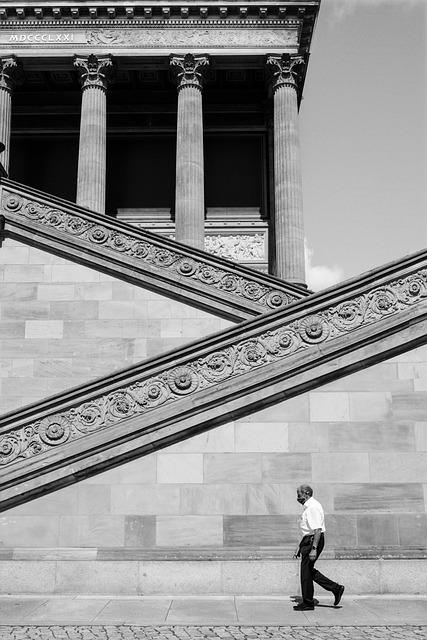Media emergencies pose unique risks due to high-profile individuals, necessitating specialized response strategies like enhanced security measures. Bodyguard services for media personalities play a crucial role in protecting them during interviews, public appearances, and travel. These services offer risk assessments, trained crisis management teams, and secure communication systems. Media professionals should prioritize emergency preparedness through comprehensive training and drills, along with staying informed about latest security technologies. After emergencies, debriefings are vital for learning and improving response protocols, with bodyguard services providing feedback to help develop robust crisis management strategies.
In today’s fast-paced media landscape, rapid response protocols are crucial for managing emergencies involving journalists and media professionals. Understanding the unique challenges of these situations is key. This article explores the vital role of bodyguard services in ensuring the safety of media personalities, delving into developing effective response strategies, training, post-emergency analysis, and learning from real-world experiences. By implementing robust protocols, media organizations can enhance their preparedness and mitigate risks. Remember that swift action saves lives, and well-trained teams make all the difference.
Understanding the Unique Challenges of Media Emergencies
Media emergencies present unique challenges that require specialized response strategies. Unlike traditional emergencies, media events often involve high-profile individuals, such as celebrities and influential figures, who require enhanced security measures. These situations demand a swift and discreet approach to ensure the safety of all parties involved, including journalists, producers, and the general public.
One significant challenge is managing the presence of the press and curious onlookers, which can quickly escalate into chaotic scenarios. Here’s where bodyguard services for media personalities play a crucial role. Trained professionals can act as a buffer between the public and individuals in crisis, facilitating a controlled environment and enabling effective communication with emergency services. Quick thinking and strategic positioning are essential to navigate these complex situations.
The Role of Bodyguard Services in Ensuring Safety
In high-pressure emergency scenarios, media professionals often find themselves at heightened risk due to their public profile and the nature of their work. This is where bodyguard services for media personalities step in as a vital component of rapid response protocols. These specialized services are trained to provide immediate protection and support, ensuring the safety of journalists, broadcasters, and influencers during potentially dangerous situations such as interviews, public appearances, or even while traveling.
Bodyguards for media figures are adept at assessing risks, anticipating threats, and implementing effective security measures. Their presence can deter potential dangers, from harassing fans to more severe incidents like assault or kidnapping attempts. By employing bodyguard services, media organizations demonstrate a commitment to their employees’ well-being, fostering an environment where professionals can focus on delivering quality content without constant worry about personal safety.
Developing Rapid Response Protocols: Key Components
Developing effective rapid response protocols is paramount for organizations dealing with high-profile individuals, especially media professionals who often find themselves in the public eye and at potential risk. When it comes to protecting media personalities, bodyguard services play a pivotal role in ensuring their safety during emergencies. These protocols should encompass several crucial components:
First and foremost, a comprehensive risk assessment is essential. This involves identifying potential threats, analyzing past incidents involving media figures, and understanding the unique challenges they face in various settings. Additionally, having a dedicated team trained in crisis management and emergency procedures is vital. This team should be equipped with specialized skills, including first aid, de-escalation techniques, and the ability to swiftly coordinate with local law enforcement or medical services as needed. Furthermore, implementing secure communication systems and establishing clear channels for rapid information exchange will facilitate efficient response times.
Training and Preparation for Effective Execution
Media professionals, like any other essential service providers, must be prepared for emergencies. Effective response protocols start with comprehensive training and preparation. This includes mock drills that simulate various emergency scenarios, such as sudden crowds, security breaches, or even high-profile assassinations. These exercises help journalists, producers, and their support staff to act swiftly and cohesively, ensuring the safety of not just themselves but also their subjects, especially media personalities who often require specialized bodyguard services.
Regular training sessions should cover emergency communication protocols, evacuation strategies, and basic first aid skills tailored for on-site reporting environments. Staying up-to-date with the latest security technologies and tactics is equally vital. For instance, knowing how to use digital tools for real-time threat assessment or understanding crowd control methods can significantly enhance response efficiency. Continuous training fosters a culture of readiness among media professionals, enabling them to execute emergency protocols effectively when every second counts.
Post-Emergency Procedures: Learning from Experience
After any emergency situation, it’s crucial that media professionals and their teams have a thorough debriefing to review their response. This process allows them to learn from every experience, identifying what worked well and pinpointing areas for improvement. By examining these instances, they can enhance their rapid-response protocols and ensure better preparation for future emergencies.
In the context of protecting media personalities, bodyguard services play a vital role in these post-emergency procedures. They provide security assessments and feedback to help media companies develop comprehensive crisis management strategies. Through continuous learning from each incident, these professional services contribute to creating safer environments for journalists and celebrities, fostering a culture of resilience within the industry.
Rapid response protocols are an indispensable tool for protecting media professionals during emergencies. By understanding the unique challenges these situations present, integrating specialized bodyguard services, and establishing comprehensive training programs, industry stakeholders can enhance safety measures significantly. Post-emergency analysis is crucial to refine protocols and ensure continuous improvement, fostering a culture of resilience within the media landscape. Implementing these strategies equips media personnel with the necessary resources to navigate emergencies effectively, leveraging bodyguard services for media personalities as a critical component in maintaining safety and security.
